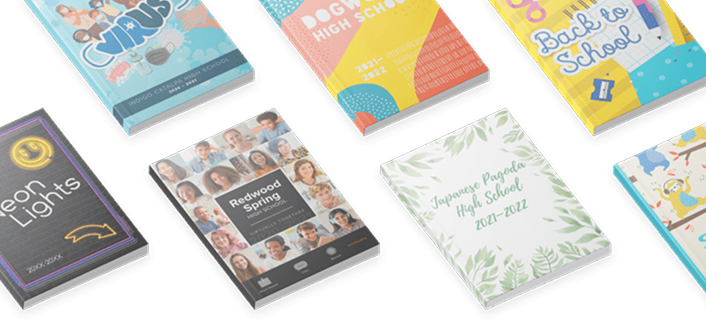Most popular
Subscribe to our blog
Most recent

How to promote yearbook during our favorite fall holidays
Double, double, toil and trouble, are your fall yearbook sales in the rubble? Well, you’ve come to the right yearbook promotion page. Say it with us: pumpkin spice and everything nice, pumpkin spice and everything nice. Just kidding. A fun fall chant isn’t going to help, but we have a few easy yearbook promotion ideas highlighted below to increase your yearbook sales during the fall holidays
The fall holidays, in particular, are a great time frame to sell your yearbooks because parents and students have that feel-good feeling about yearbooks, especially since portrait day takes place around this time. (Or retake day—who can be perfect on the first try, right?)
Promotional Idea 1: Early-Ghoul Special
One way to market your yearbook and increase sales can be to offer a special discount. Those of us who are moms, know we love when good products go for great deals! Before Halloween, offer a fun-themed discount to the parents who buy the yearbook before Halloween before the prices get spooky. Or even after Halloween, once the costumes have been worn and the candy passed out, yearbook sales could become your next favorite holiday—like the day after Valentine’s Day. You know what we’re talking about: discounted chocolate!
If you’re down for a special, but don’t have the time to create your own yearbook flyers, don’t witch out! We want to help by giving you a professionally designed flyer template and even sales flyers, all customizable.
Promotional Idea 2: Halloween Party Promotion
Most classrooms, even virtual ones, will celebrate the spooky, fun holiday of Halloween. Classrooms will have candy and lots of chatter and you can sell a scary amount of yearbooks. During the party is a great time to take pictures of everyone dressed up and promote that those pictures will be in the yearbook. Parents want to buy yearbooks if they know their kid is in the yearbook. Have your yearbook moms take photos at each holiday party and talk up the book!

Promotional Idea 3: Turkey Bowl Giveaway
Everyone loves free stuff! Moms, kids—we mean everyone. A fun way you can sell more yearbooks is throwing a fall holiday raffle or a giveaway. First, you can offer a giveaway for everyone that has bought a yearbook before a certain day leading up to Thanksgiving. Everyone entered can win a gift or treat, like a gift card or a recognition ad.
Second, you could have a giveaway going on at the school that doesn’t require any parents to buy yearbooks, but to promote! For this giveaway, mouth-to-mouth marketing is going to sell your yearbooks because everyone is getting excited. Offer a free yearbook for the most photo submissions, or to a random follower of your school’s page who “likes” a social media post promoting the giveaway. You can turn the Turkey Bowl giveaway into a month-long social media contest to increase your school’s social channels engagement and build momentum with each post. Check out this social media calendar with ideas on how to run your contest!
Whatever direction you choose for marketing your yearbook this fall, Treering is here to help! While reaching sales goals immediately can be witch-ful thinking, it can definitely happen over time with some creative guidance.

4 strategies for collaborating with parents, staff, and students on yearbook
Parents, school staff, and students all have opinions on what the yearbook should look like, cost, and include. That's fair, to a degree: the buyers and subjects of the yearbook are the key stakeholders in the yearbook creation process. Here are four tips for drawing (and keeping) them in close collaboration.
Yearbook Collaboration Tip #1: Create Consistent Ways to Contribute
Schools doing a Photo Dump Friday via social media or their weekly newsletter receive regular submissions. Using tools your school already utilizes is the best way to collaborate on photo collection from non-yearbook personnel, and a specific call-to-action yields the results you want:
- Share your first day snaps below! You may see them in the yearbook. #photodumpFriday
- We’re looking for sport photos for the yearbook! Share here! #photodumpFriday
- Get your child and fur baby in the yearbook: post your pet photo below. #photodumpFriday
Another way to partner with students and staff is to create timely contests:
- Cover design contests or, similarly, a title page contest that encompasses theme elements and expresses them in original student artwork reaches a diverse group of students. Some schools create a spread with all the runners up!
- Increase your submissions for club photos while encouraging creativity with a team or group photo contest.
- During an all school event, such as Red Ribbon Week or Book Fair Week, create a scavenger hunt.
Many yearbook committees assign “beats” like professional journalists. There could be a reporter per grade, subject area, or event charged with making contact with event organizers and gathering photos. Set a measurable weekly goal, such as ten photos, per beat to ensure coverage. With a steady stream of photos coming in, editors and page designers will be able to assess which students and grades are missing.
Yearbook Collaboration Tip #2: Go Pro
Identify working parents who want to help, and have one-off jobs ready. You may consider trading ad space in your yearbook and some social media shout-outs for their services.
- Work with a professional photographer to be a guest teacher in your yearbook class or run a photo booth at Father-Daughter Dances, Spirit Week, or Teacher Appreciation or even take buddy pics and fashion shoots.
- Join forces with an event planner to create the party of the year for yearbook distribution.
- Petition a local caterer or restaurateur to hold a teacher appreciation/yearbook hustling breakfast during a morning staff meeting, do a Taco’bout Awesome luncheon for students who bought a yearbook, or hold a fundraiser dinner to purchase books for students in need.
- Local journalists, newspapers, or news media may offer tours of their workspace for your journalism students.
- Ask a graphic designer or marketing pro to help create a social strategy for increasing yearbook buzz or to brainstorm ideas for conveying the theme visually.
Yearbook Collaboration Tip #3: Play Nice in the Sandbox
We all know that mom/teacher/dad/coach who controls every aspect of their program, and is a nightmare to work with. Don’t be that guy!

Collaboration Includes Delegation
For your own sanity, and that of your loved ones, be like Elsa and “Let it go!” Some of us have a hard time saying no because we want to please others, or because we want to ensure a quality end result. If this is truly a struggle area, select a few small tasks to share with others. Maybe coordinating picture day is not your favorite. Maybe it’s creating the index. Who can you recruit to help with these tasks? Build your dream team!
Also—if your goal is truly big picture—you’ll want to build a lasting program, and continual collaboration with your school community is going to build a tradition that will extend beyond your tenure. It’s important to share responsibilities and knowledge for the future of the yearbook team.
Have Jobs Ready and Set Clear Expectations
Again, just because a person is involved with the yearbook doesn’t mean it has to be all-consuming—that goes for leadership too! Draft your volunteer roles with specific expectations. And remember to include ideas for working parents.
Some jobs with which parents can help are:
- Parent organization newsletters: get yearbook info in front of parents monthly
- Booster club liaisons: connect weekly with the biggest sports fanatics on campus to gather photos, stats, and scores, especially when sending a yearbook reporter isn’t always possible
- Class/grade reps: these people check in with classroom teachers weekly to coordinate in-class photos of projects, celebrations, and field trips
- Proofreaders and photo editors: clutch teammates who help ensure accuracy monthly
- Page designers: with Treering, you can assign a spread to a certain person or group
- Volunteer appreciation: find a fun parent who builds up others to coordinate social events, such as birthday parties, and an end-of-the-year volunteer celebration. If your school does an awards ceremony, you should ensure your yearbook volunteers are honored.

Campus staff can help with the above and:
- Getting an official roster from the front office to ensure names are correct and all students are in the book
- Sharing yearbook information on school social media and in parent communications
- Keeping the yearbook team abreast with events
- Contributing photos to shared folders
- Identifying students who need financial assistance purchasing a book
Follow Up
When someone offers to help, because you have your plan in place, you seamlessly can plug him or her in! Not only is it disrespectful to ignore an offer, it also reflects poorly on your yearbook program. People talk. Let’s have them be your hype persons, gathering even more talent and book sales.
Yearbook Collaboration Tip #4: When in Doubt, Feed People
Hosting a round table dessert for student leaders or teachers will elicit information from many “smart cookies” about what key stakeholders would like to see in the yearbook. You may get new ideas for coverage as well as insights on yearbook buying practices.
Yearbook is a team sport. A “thanks a latte” or breakfast bowl letting volunteers know they are “berry helpful” will go a long way to let your teammates know you “donut know success” without each of them.
Bottom line: the best way to collaborate with stakeholders is to get to truly know people and their gifts, and show them deep appreciation for their contribution.

Yearbook class: what to teach the first six weeks
You thought yearbook class was just putting pictures on pages. Then a roster arrived. Then the expectations to meet state and national standards for ELA, CTE, and 21st Century Learning. Cue migraine.
The yearbook heroes at Treering know the difficulties new advisers face (shameless plug: that’s why we’ve created a contract-free, flexible yearbook solution) and we’ve created six weeks-worth of material for your yearbook class.
If it’s your first year advising, select one or two areas on which to focus. As your program develops, deepen those areas and add a new growth target.
For example, year one, you may want to focus on theme development and photography. Year two, expand those areas and add storytelling captions. Year three, further develop your writers with feature stories. Repeat after me, “I won’t do it all! I won’t do it all!”
Week 1 Goal: Build a Mission-Centered Yearbook Staff
Teambuilding
Every day, do something to help your team grow in familiarity with one another. Start with something simple, such as Birthday Lineup followed by some cake. To reinforce all the new names, Hero-Shambo is a raucous way to inspire team spirit while putting names to the faces.
Spend some time understanding personalities as well. Free online tests can provide discussion start points. Debrief either by grouping students who scored similarly and have them discuss what resonated with them and potential misconceptions. Groups could even create a poster or mood board reflecting their strengths.
Theme Development
As your year, and your book, should be focused on telling the story, theme development is top priority. Start with a SWOT analysis. Then list all the changes, new initiatives, and differences that make this school year stand out from the last five. Are you doing a building project? Did you add an international program? Is there new leadership? Did you merge with another school? Is this the first senior class that’s gone all the way through from kindergarten?
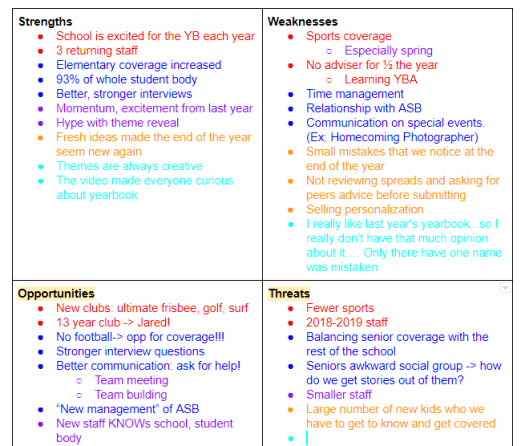
How can you convey this story this year?
Many times, our students come up with a catch phrase and want it to dictate the content. Your story—whether you have a visually strong, photographic book, or a journalistic yearbook full of features—should lead your look. Our Yearbook Theme Curriculum Module can help.
Photography
There are five beginning photo exercises in Treering's blog. Spend some time getting to know your team's cameras before jumping in. This may also be time to involve the editorial staff: assign an exercise for each to learn and facilitate.
Reporting
Start asking your yearbook students a question of the day. (If you have a large class, you may want to poll 3-5 students each period for time.) Before the next class, your yearbook students should ask that same question to three other students (no repeats). If you have 12 yearbook students, that’s 36 student quotes you can include in a sidebar each day, 180 each week! Use a Google form to input responses and track respondents. This not only increases coverage possibilities, but it warms up your student body to be pursued and peppered by your yearbook students!
Week 2 Goal: Set and Slay Yearbook Goals
Photography and Design
Begin the week with a photo scavenger hunt. Use the results to introduce your procedures for file naming conventions, uploading, and tagging. Model how to design a spread with their snaps.
Introduce yearbook vocabulary then grab some magazines to play a grown-up version of show and tell. Reward students who can find eyelines, ledes, and serif vs. san serifs fonts!
Further demonstrate the principles of design and get in your yearbook software to recreate some of the layouts you loved in the magazines. You should be in your design application 2/3 of the week so your staff gets comfortable.
Teambuilding
Since focus this week is on goal-setting, use communication games such as Blind Polygon or adapt Minefield for your classroom. In both scenarios, identify the goal and evaluate what worked and what didn’t when you are finished.
Revisit the personality profiles from week one—what effect did they have on students’ problem-solving and communication?
Theme Development
It’s also time to revisit your SWOT and story-of-the-year brainstorm. Think of your senses: how does it feel, sound, smell, and look? (Don't worry, we're not going to encourage tasting your yearbook!)
Determine tangible ways to convey the story of your year. In the Design Module, we talk about color and fonts. Both are two key visuals to harness the essence of your theme.
For example, If your yearbook theme is Move Mountains, you are going to want to use colors and fonts that are bold, signifying strength.
Reporting
Continue your question of the week, and evaluate the process. Where are students struggling?
If fear is a hindrance, watch Jia Jiang: What I learned from 100 days of rejection. If it’s procrastination, watch Tim Urban: Inside the mind of a master procrastinator. In your debrief, develop concrete strategies such as a few scripted lines or a schedule.
Marketing
Make it a point to consistently market your book and your program. It's possible to plant proverbial seeds for next year's staff in September!
https://blog.treering.com/teaching-yearbook-making-a-marketing-plan/
Week 3 Goal: Build your Team’s Toolbox
Teambuilding
Begin holding weekly staff meetings. In these meetings, discuss event and photo assignments for the week, when your next deadline is, and have every staff member give a 15-second update of their work. A simple, “Here’s what I’m doing, and here’s what I need to do” will keep it focused. You're building a culture of accountability.
Editors can also lead the meeting by using the first 15 minutes of class to develop a skill: photographing in classrooms with fluorescent lights, sharpening images in Photoshop, cropping images, etc.

Reporting
Evaluate the question of the day. Have students put last week's action plan into play? What percentage of the student body has been asked? Discuss with your staff where you will begin incorporating these quotes and what questions you can ask to tie-in with your yearbook theme.
Start a word graveyard: on a prominent bulletin board, list “dead” words and phrases. Have a reason why you’re dumping one: for example, many athletes will say their team is a “family” as will ASB, the dance company, the math department, etc. Teach interview skills to develop this: what drives your bond? Tell me a way a teammate was dependable. What traditions do you have that make you like a family? Get the story.
Design
Develop your style guide and decide which elements (e.g. bleed, color overlays) will enhance the story you are telling this year. Your editorial staff should begin building templates in your design software. By the end of the third week, your entire team should be comfortable doing basic tasks in your design platform.
Week 4 Goal: Progress!
Teambuilding
Using comics or stock photos, create Comic Creations. Then, with a partner, students should list three questions they could have asked to get the quote. Use your word graveyard and our Five Common Topics as needed to build stronger questions.
Teach the expanded caption using the Comic Creations quotes. You may want to first show NSPA’s Terrible Leads as a non-example before modeling your own yearbook gold.
Theme Development and Design
Evaluate your style guide and templates using NSPA’s design checklist; adjust as necessary. This is a good time to pause and remember our mantra: “I won’t do it all! I won’t do it all!”
Use an idiom dictionary to create spin-offs for your theme. Let’s return to our Move Mountains theme. For recurring modules, you could use:
Photography
By now, your students should be photographing class activities, school events, and sports practices and competitions regularly. Have your editorial team select some photos of the month to show on a projector. Discuss, as a group, what made the photographs standout in their composition and storytelling. Elicit advice from the photographer. Share top photos on social media with a call to action: “Want to see more? Buy a Yearbook!
View this post on Instagram
A post shared by Treering (@treeringcorp)
Social media serves a double purpose: market your program and your yearbook!
Marketing
Create a social media calendar and assign posts to students. Each post should be approved, in writing, by an editor and another student before going live. You may want to utilize a group messaging system or a shared document to track approval and content.
Week 5 Goal: Momentum
Teambuilding
Before this week’s staff meeting, ask an editor and a staff member to each select a Yearbook Hero to celebrate. Share the love on social.
Introduce peer evaluation by partnering two students, equipping them with a rubric, and asking them to evaluate a strong example of design. Because it’s “easy” to critique something weak, this forces students to understand why a layout works.
Allow students to sign up for one-on-one sessions with you, and possibly your editor in chief, during class where they can have undivided coaching.
Theme
During your next editorial meeting, ask the team to brainstorm theme-related
Photography, Design, and Reporting
After your weekly staff meetings, you should have a good idea of the the page statuses for the yearbook. Your team will continuously be in a cycle of photographing-reporting-designing. Monitor progress by continuing to set and track goals. Break up the monotony by adding in relevant skill-building lessons and—dare I say it—nothing. Sometimes, a study hall so your students can catch up is a great way to show you value their time and commitment to all things yearbook.
Week 6 Goal: Establish Routine
Rest assured you created consistency and accountability with a weekly team meeting. Because of this, students know their weekly assignments such as social media posts and photo shoots. All of your yearbook team is trained on your software, and with peer editing, a safe dialogue and pre-disclosed standards will refine areas of growth. Is it perfect? No. Will it ever be? No. And that’s OK!
Remember your role: advise. Here's a checklist to help.

QR Code is a registered trademark of DENSO WAVE INCORPORATED.
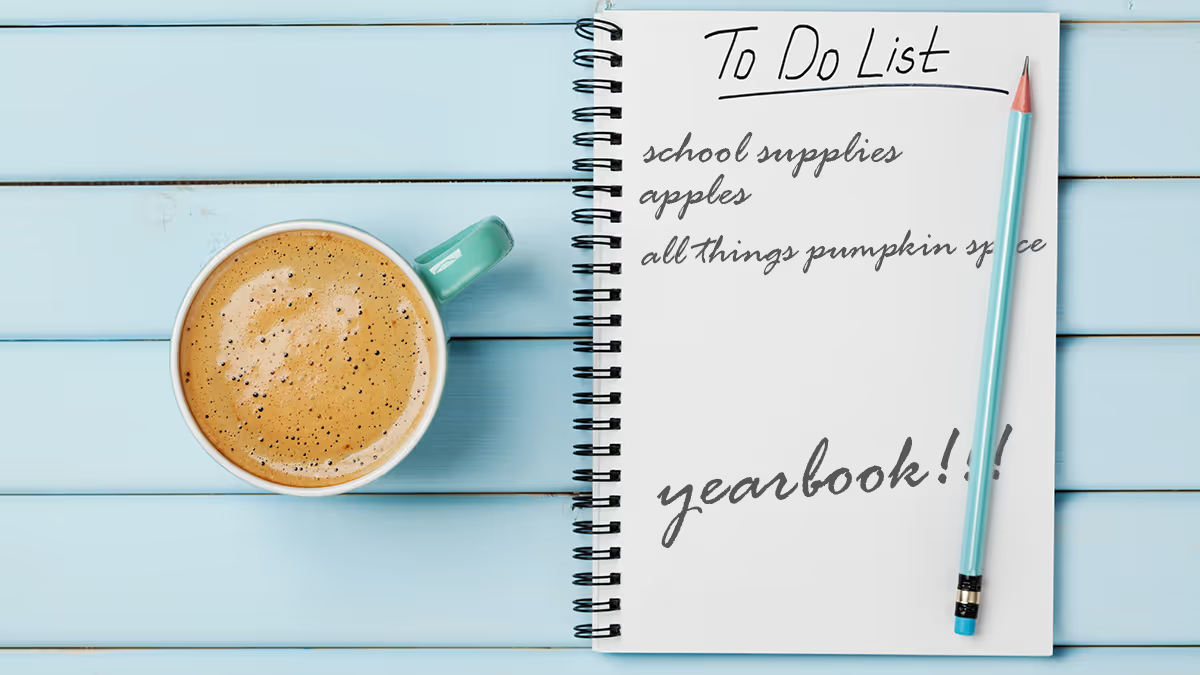
5 things to do to sell more yearbooks… in the fall!
Back to school means back in business. Selling your yearbooks should start as soon as you do! Here are five easy ideas to immediately implement to gain sales momentum at the start of the school year. Plus, we're giving you a social calendar and slew of sales flyers you can customize, then share.
1. Stick it to Them
K-12 yearbook adviser Erika from California goes sticker crazy: “Our class meets 7th period, and with end times being staggered, my students run to the lobby and place a sticker on each [elementary] student as they head to the pick up lines.” The stickers have purchasing info on them.
In Georgia, adviser Dara does the same, then takes it one step further by sending a humorous follow up email:
We didn’t want you to get stuck without a yearbook, but if you accidentally ran the reminder sticker through the wash, here’re some handy tips to take care of it.
[Link to purchase yearbook online]
Consider designing your stickers to match the yearbook theme for a branding tie-in.
2. Plan Posts
We all know the cliché: failure to plan is a plan to fail. Use a promotions calendar to diversify your posts and make sure your yearbook sales and marketing strategy match your audience.
We’ve created a free social media calendar to promote your yearbook and your program.
Bottom line: parents buy the books. They’re mostly on Facebook and Twitter, so angle your yearbook sales posts to them. Unless you’re a huge *NSYNC fan, reading buy, buy, buy is not going to get the job done alone:
- Use #throwbackThursday as a feature for campus leaders and parent volunteers to pose with an old yearbook
- Ask parents to share their advice to seniors
- Do a guess the teacher feature with senior photos
Social proof is one way you can positively encourage others to support your program by buying a yearbook.
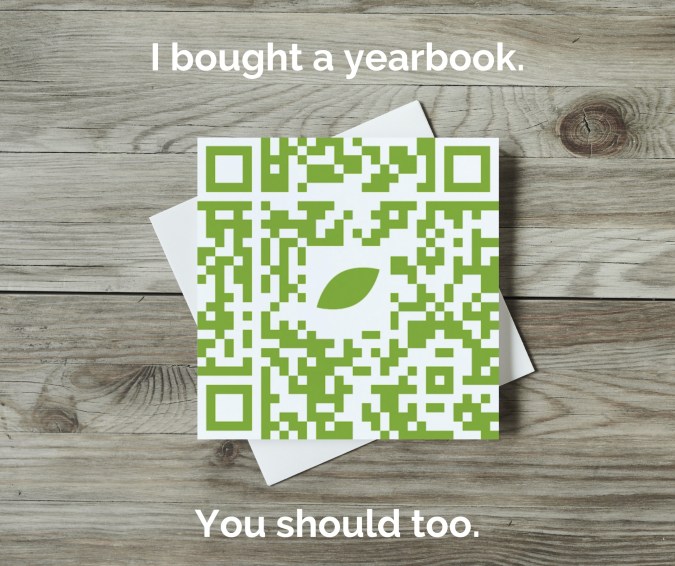
We trust our mom friends, so let’s give them a social badge to share.
We want students to want the book. Mix in student-centered messaging on Facebook and Twitter, such as reasons to buy a yearbook or highlight yearbook photos from a recent event that showcase non-buyers. Also, focus social media efforts on TikTok and Instagram to
- Play up a trending sound or duet with a popular video
- Post a variety of messages to increase engagement
- Partner with campus influencers (ASB, PTA/PTO accounts, athletics) to hype your yearbook or upcoming event
3. Sell your Program
One step beyond using social media to post links of how parents can buy yearbooks or recognition ads, is to show people the value of your yearbook program. The people who help make the book are just as important as your product.
- Show behind the scenes work: time lapse Photoshop work, someone hand drawing a layout, the yearbook committee meeting up for lattes and layouts
- Have the student body vote on a dominant image for a spread
- Reveal sneak peeks of the book
- Share your goals (e.g. 200 new followers, 60 books sold by December, 10 photos submitted) and, more importantly, how you celebrate
- Thank the yearbook heroes publicly on a #thankfulnessThursday
4. Simplify Your Yearbook Sales Processes
When someone says, “I need to buy a yearbook,” then you should be ready to sell it, not hand them a flyer. Repeat after me, “Sell the book.”
Evaluate your Yearbook Sales Platform
Your yearbook program is a business whether you have a multi-year contract with book minimum orders or not. Therefore, one way you can serve your customers aka mom and dad is to make it easy for them to buy your product!
- How many clicks does it take to go from home to checkout?
- Do you have to scroll for days?
- When you share an ordering link, it is two miles long?
- Can you link directly to your school’s store or do families have to search?
- Are the sales reports easy to find and read?
Crowdsource Efficiently
Parents want to buy your yearbook because they know their child will be in it. Make it easy to contribute:
- Add a specific, bi-weekly call-to-upload to your social calendar
- Pass out cards at games and events with your yearbook email to that mom with the camera
- Give shout outs to people who send you photos
- Use QR codes
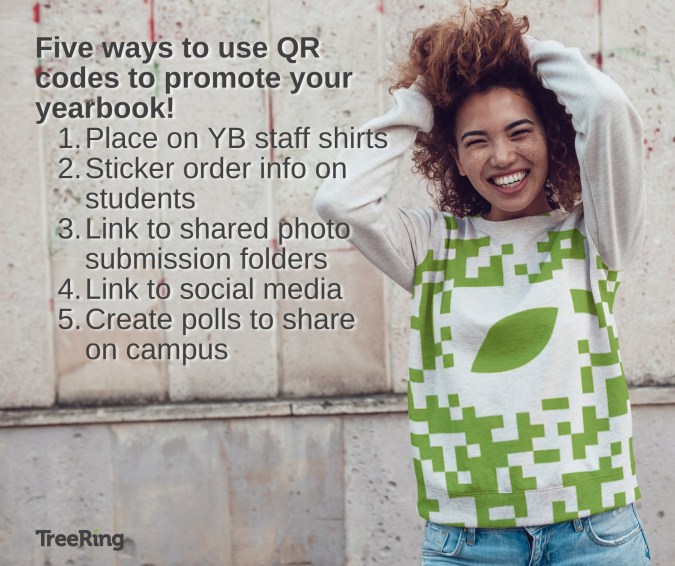
Use QR codes on all. the. things.
5. ReMEMEber the Posters
Texas PTA mom Rachael said she drives past her children’s school every week. When there’s a big announcement, such as yearbook sales, her school puts a banner on the fence or a series of yard signs. Because it happens intermittently, she knows it’s valuable.
Old school paper posters can be effective (just don't be wasteful!) if the messaging is correct and the location is on point. While we love a good yearbook meme, keep it clean, positive, and fun—just like your yearbook!
QR Code is a registered trademark of DENSO WAVE INCORPORATED.

Yearbook hero Joy Halverson: keeping positive during changes
Treering Yearbook Heroes is a monthly feature focusing on yearbook adviser tips and tricks.
The understatement of the year: the pandemic has drastically changed things for many people, especially for teachers and their students. Teachers re-created their pedagogy. They worked to not only remain positive for their own mental health, but also as a example to their students. And then there were the ongoing uncertainties. One yearbook adviser modeled a semblance of normalcy through her yearbook program.
Meet Joy Halverson, a P.E. instructor at Aliso Viejo's Journey School, a public charter school for grades K-8 in Orange County, California. Joy has been teaching at Journey School for 20 years, and her kids attended there too. The school has always been a unique, art-centered school that prides itself on its students’ contributions to creating a more sustainable world. With the pandemic, though, many students did schoolwork completely remote or only came in a few times a week.
Joy was eager to find a way to capture the year in an environmentally-friendly and memorable way and did so through a customizable yearbook via Treering. Below are tips about how Joy captured this non-traditional year in Journey School’s yearbook.
How did the pandemic affect the yearbook advising process for Journey School?
With so many students working from home, there were changes that needed to be made in order to truly capture their lives this past year. I’m a creative person at heart, so I wanted to ensure that the yearbook reflected the many ways our students pivoted, showed grit, learned, and still managed to have fun.
Fortunately with Treering, I was able to continue making the yearbook from home. The book captures each student’s memories from this past year so that years from now, they’ll look back and see all that they accomplished despite the obstacles thrown our way.
What advising tips do you have for getting creative in capturing student memories in the yearbook?
For starters, I took 1,600 screenshots of each student to build out their portrait pages. Needless to say, I really perfected the art of taking screenshots! Parents also submitted events from home that were taken throughout the year, such as their kids in Halloween costumes, knitting projects, and more.
As a P.E. teacher and the owner of Circus Joy, it’s in my nature to want to find ways to keep students moving, even if it’s through a screen. During my typical in-person P.E. classes, I would often teach juggling to my students. So when transitioning to teaching juggling through virtual learning, it created some pretty unique opportunities to capture fun screenshots for the yearbook.
While it’s not always easy to learn new P.E. skills through Zoom, it’s still possible if you have the right attitude. And my students truly persevered this year.
At the end of the day, the memories the students have of this past year deserve to be documented. And I find it so fulfilling to help make this yearbook possible for them.
What do you hope students have learned from this past year and how is that reflected in the yearbook?
This yearbook will be a true reflection of the school year. So many unique moments were captured, including students wearing “we’re on mute” and “oops, you’re frozen” printed t-shirts. From the circus classes we captured on Zoom to the many fun screenshots, I know that this book will hold so much value for years to come. The K-8 students will eventually grow older and have their own families. This book, although different from any other year, will showcase all they’ve done. And that makes the yearbook making process worth it.

Back-to-school: 5 tips to set your yearbook up for success
Whether you're excited to get the kids out of the house and into the classroom or kind of dreading the hussle that back-to-school season brings, another year is here! Fear not, we’ve got your yearbook back, cover, custom pages, and everything in between. We’re a yearbook company after all! The first six weeks of school are the best time to set up your yearbook for success.
This might sound overwhelming given you already have to absorb a million new routines, teachers, rules, and other back-to-school rituals, so we’ve simplified it to 5 simple steps to yearbook success this school year.
Set the Yearbook's Tone: Enthusiasm is Contagious
The first six weeks of school are when everyone is ready to take photos. Welcome back Moma-razzi! It’s a new year, with new friends, new teachers, and new pencils. Bringing this energy into the yearbook can set the tone for the entire year (with rough patches, obviously. We’re all human). The more excited you are to start the book, take and collect photos, the more excited everyone around you will be. Enthusiasm is contagious and engagement is demonstrated by leaders. If the yearbook editor and/or committee is excited, then it’s way more likely everyone else will join in.
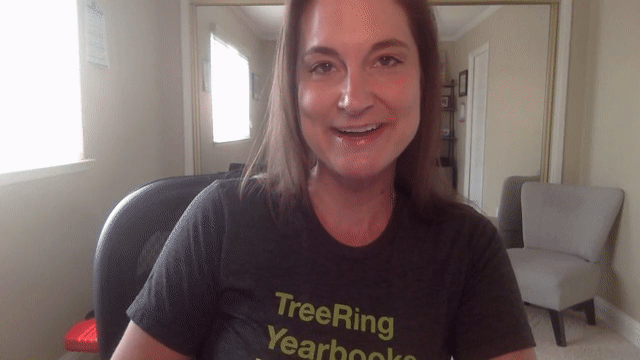
Be in the Know: Reboot Your Inner Gossip Girl
Ok so maybe not exactly like the Gossip Girl reboot, but you get the idea. If you’re editing the yearbook, this is the time to know what’s going on. Since most yearbooks show the year in chronological order, be prepared for the first day of school photo opportunities like the car line, opening assembly, and bus drop-offs. You can even reach out to teachers (who are yearbook editors’ best friends) and try to either get inside a couple classrooms for first-day activities or ask them to share all the amazing photos from the day.
You’ll want to know all the back-to-school plans from the school —including the PTA calendar of events. Once you’re in the know, you can work with other parents and/or teachers to take some photos so you don’t feel like you have to be everywhere. If you’re working with students in yearbook creation, make sure you’re in the know about what you’re going to be teaching with an updated staff syllabus and curriculum.
K.I.S.S.: Keep it Simple Silly
Alright, you’re excited and you know what’s going on the first day of school! You’re almost ready for a fantastic year of yearbooking fun, but we highly recommend getting ready for yearbook by setting up an easy photo system for contributors, whether they are coming from teachers, parents or students. Yearbook can be hard and stressful, so that’s why setting up a system where parents can upload pictures, like a Google Drive, or using a hashtag that’s specific to your school can be beneficial. By using a hashtag, you can tell parents that if they use it, it gives yearbook staff permission to use the photo. This can really take some of the burden off. Your unique hashtag can help you categorize the photos, and, since we’re all on social media these days, possibly get more photos than past years.
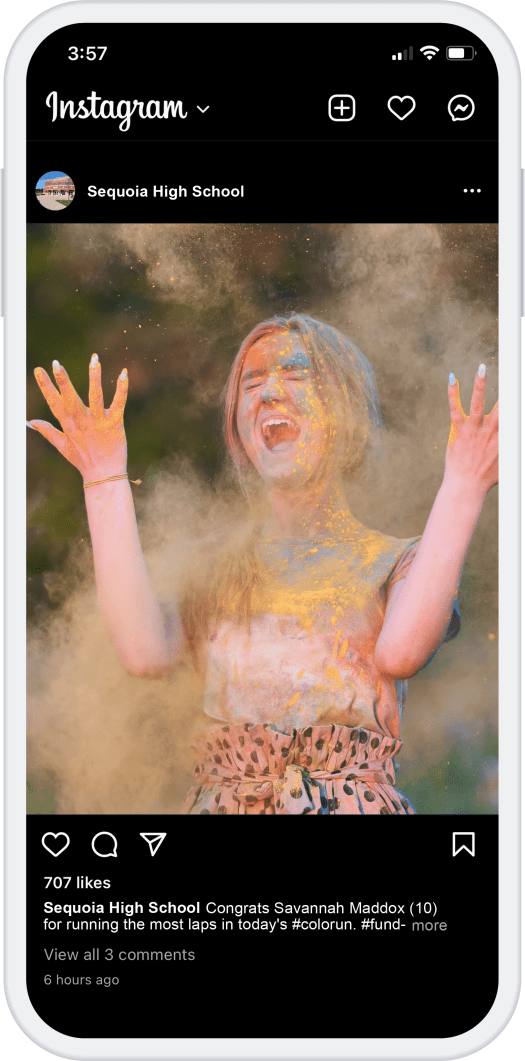
Another easy system to think about: Set up a regular posting cadence on the parent Facebook page, PTA group or the school’s main social media to encourage anyone with great photos to submit to the yearbook. Setting a realistic schedule up front makes it easier to stick to, and contributors get used to hearing from you. Starting a bi-weekly schedule up front instead of reaching out after the first six weeks of school will likely result in more photos. After all, it’s a lot less intimidating to send a couple photos at a time versus the “photo dump” some parents or teachers may have from the first six weeks.
Pay Attention to Your Yearbook Provider: They're Your Friends
Pay attention to “getting started” emails from your trusty yearbook company friends. The friendly yearbook companies - the ones with excellent customer service, not to name any names - will help you get your yearbook started, you just have to pay attention. Keep an eye out for email blasts to help kick off yearbook creation by walking advisers through back-end aspects of yearbooking. (Yes, it IS a verb!) Depending on what you’re looking for, you can get a mini-course on how to create a yearbook, more advanced design resources, marketing assistance and more. For a #MarketingMoment, brainstorm with your yearbook team on capturing your theme in your group photo. For example, if your theme is an anniversary book, you may want to photograph each member with a past yearbook. Another #MarketingMoment idea: Hype up your last yearbook to the PTA, students and teachers, and sprinkle in all the new plans you have for the first six weeks to build excitement!
Find Your Yearbook Crew: Even if it’s Just One Other Parent
Finding someone that can help you manage shot lists, reach out to teachers and come up with ideas is so important. As you know, and it bears repeating, yearbook is a lot, but it’s also a treasure for kids growing up. That’s what’s most important and what makes getting involved so worth it.
Food-for-thought on where and how to get involved:
Get in with the teachers. Classrooms can become like second homes to students, and their teacher is always there - that’s why they’re your best friend for photos. Ask to bring food and drinks to a staff meeting in exchange for 15 minutes to talk about the yearbook. Give teachers and administrators easy blurbs, talking points and material about the yearbook to include all of their back to school communications. There are some teachers who will not allow us to pull kids for interviews EVER, and some who prefer the first or last 15 minutes of class, so be prepared.
Start a "gotcha!" list. Using the early enrollment roster from the front office, make a card for each student with their name and grade. Once a week or so, go through your coverage report/index and mark off the students you’ve captured. Set a goal to interview or photograph every student at least three times with questions of the day or activities they’re involved in.
Celebrate! Set easy wins to give yourself, your crew, the PTA or school a reason to celebrate. Oh, you received 50 photos from the first day? BAM! Let’s go get dinner. This classroom submitted the most photos after the first six weeks of school? BAM! Reward that teacher and students with a little prize. Even small milestones deserve a celebration, and each celebration will motivate more people to participate.
Have questions on how to start building a better yearbook? Check out our Help Center for customer support.

2021-2022 yearbook theme trends
UPDATE: see 2023-2024 yearbook theme ideas. For more post-pandemic design trends, keep reading.
Using nostalgic designs, organic colors, and handmade elements, check out how you can harness the design and color trends for your 2021-2022 year(book) themes. The design world is unanimous: joy is back!
Treering has pre-released 15 new on-trend yearbook themes for 2021-2022! Log in to the app (for free) to see the full line of backgrounds, fonts, layouts, and artwork included in each theme to find some inspiration for your yearbook this year. Whether you're a Treering user or not, you can always look and use our ideas no matter who is your yearbook provider.
Trending Now: New Yearbook Theme Sneak Peek
Check back in late August for the full collection of new themes joining the Treering catalog. In the meantime, check out our top on-trend themes below.
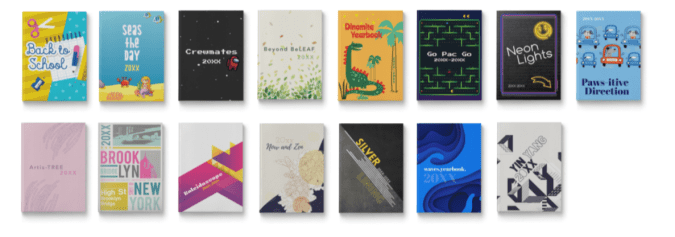
Our Top Five Yearbook Themes and Trends
2022 Yearbook Theme Design Trend: Nostalgia, Color
Nostalgic design is synonymous with retro and vintage with the caveat it evokes emotion. Research shows pieces from the past produce positivity in the present! Pair nostalgic elements such as colors, fonts, and images with old school photos from past yearbooks for a complete blast from the past.
Get the look with Treering:
The 90s are back and with it memories of Lisa Frank binders, Zack Morris phones, and NSYNC songs. As you rock your acid wash jeans and baby doll Ts, check out the vibrant colors and iconic graphics in the Back to School yearbook theme that have as much pop as your fav boy band. Outdoorsy colors—think sunshine, spring water, and wildflowers—brighten up this design with drag-and-drop school supply artwork and backgrounds.
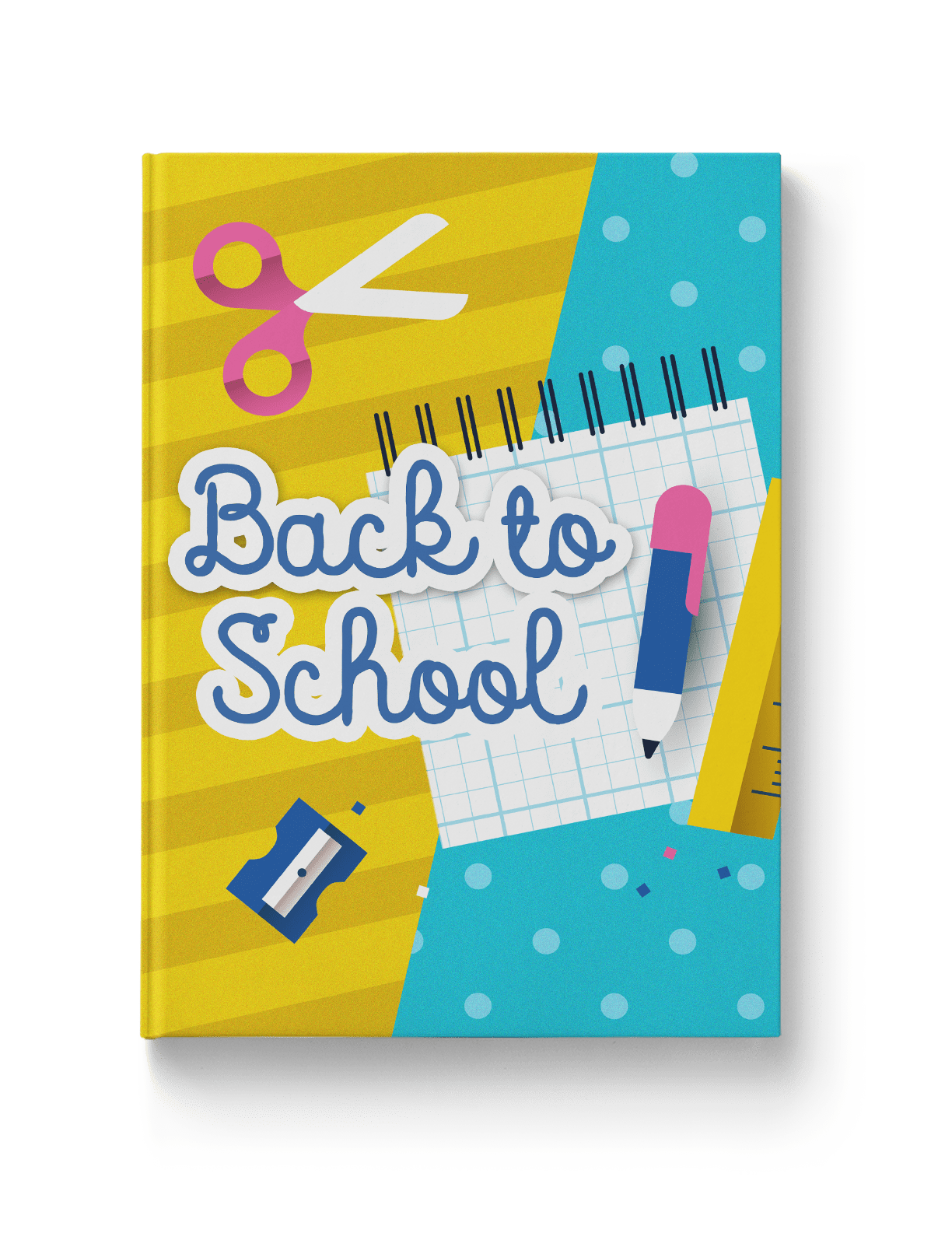
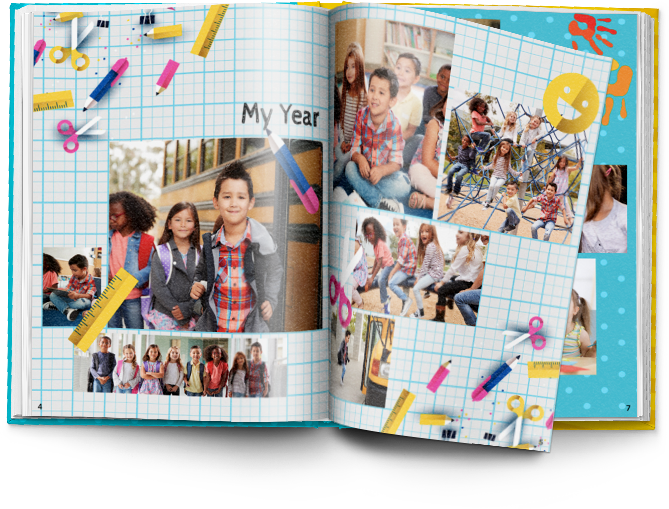
2022 Yearbook Theme Design Trend: Organic, Illustrative Design
In a year when we’re going back-to-basics in the classroom, you can bring them into the yearbook room. Celebrating living things is a tenet of organic design. Flora and fauna pop up in many of the new themes for 2021-2022 (hint, hint).
Hand-drawn images and line art continue to dominate the illustrative graphic design trends. Outlines, line art textures, and freeform shapes get their inspiration from the natural world.
Get the look with Treering:
Now and Zen is an airy collection of crisp lines, layers, geometric shapes set in this yearbook theme's neutral color palette. Like flannel, this design trend is meant to be layered.
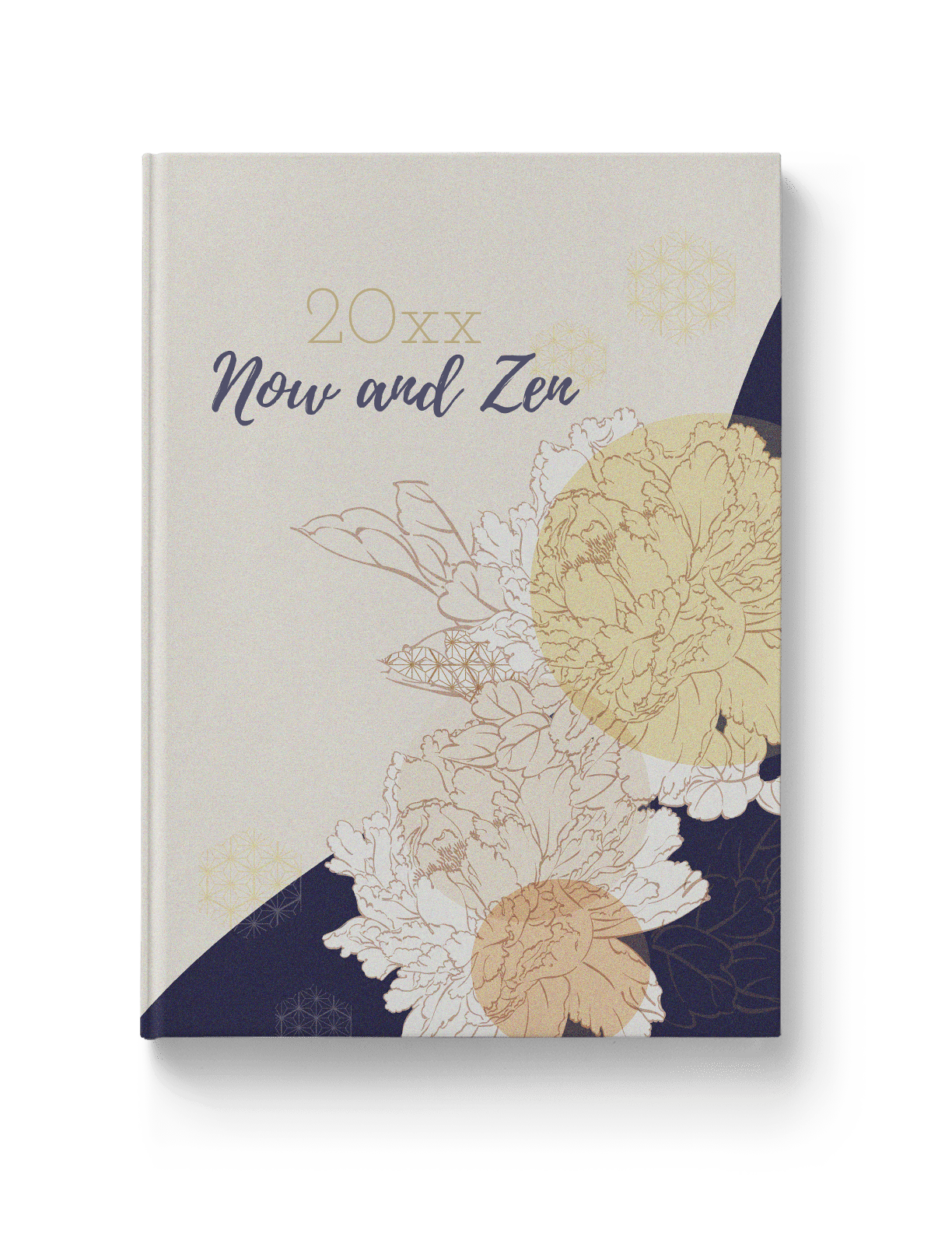

2022 Yearbook Theme Design Trend: Nostalgia, Symbols
We’ve established nostalgia gives us all the feels. Neon’s century-long presence in the US conjures memories from riding in classic cars and drinking malts with grandparents to wearing Electric Youth perfume and sweating through skate nights.
Symbols can do the same. A thumbs up or a heart means you’re getting noticed. A border means READ ME! Arrows tell you to keep going because exciting things are forthcoming! And we all have our go-to emoji for wearing our feelings on our screens.
Get the look with Treering
We modernized the look of neon by adding emojis and icons you can use to divide academics, extracurricular, and personality pages. Because of this, Neon Lights is a complete theme package that will lighten the load for your yearbook team.
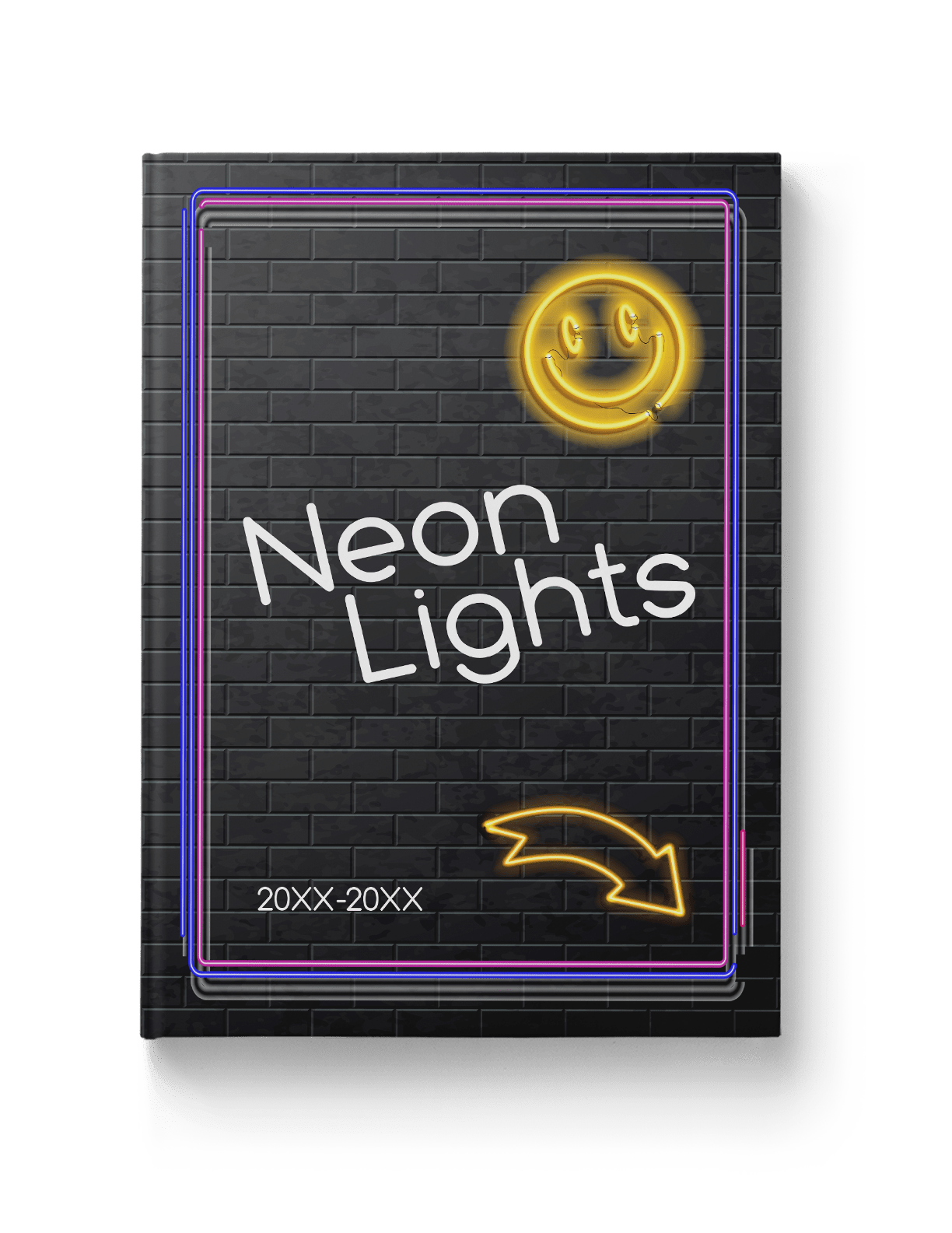
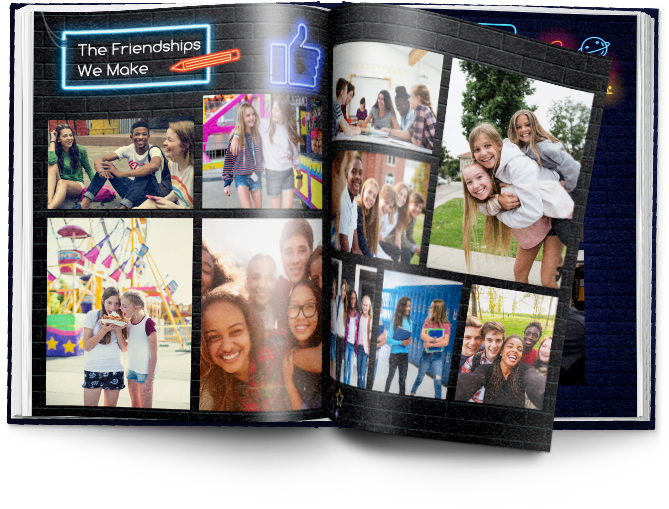
2022 Yearbook Theme Design Trend: Organic, Illustrative Design
After a year inside, the outdoors are calling! Natural textures, shapes, and colors are hot in the interior, industrial, and graphic design. They soothe. While it may not be as sappy as the nostalgic design trend—see what we did there—being in nature boosts creativity and reduces stress. And we need those two things for a budding yearbook program!
Get the look with Treering
The Beyond BeLEAF yearbook theme has illustrative, organic shapes and neutral colors that echo Treering’s commitment to sustainable business practices (shameless plug, I know...). Leafy borders, overlays, and frames hug your photos.

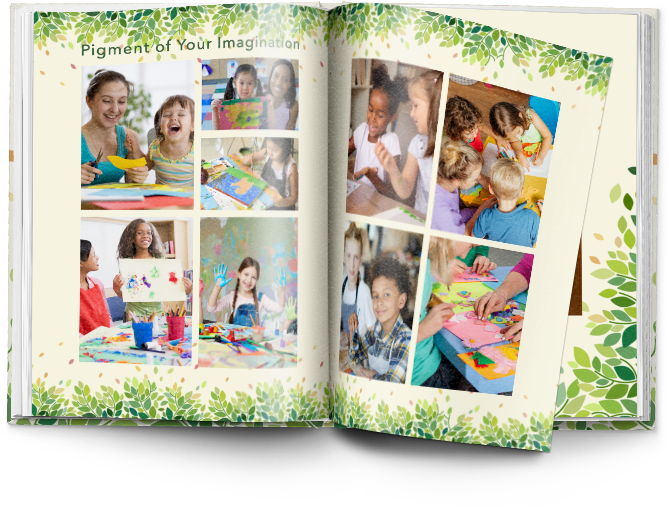
2022 Yearbook Theme Design Trend: Illustrative Design
The glory of illustrative design is its many manifestations: cartoon illustration picks up where the seriousness of the line art design trend leaves off. It’s whimsical and potentially nostalgic. It’s bold and bright. It’s fun and funky. If a playful yearbook theme aligns with your team’s vision, this is the trend to implement!
Get the look with Treering
By taking inspiration from popular games (that’s plural for a reason, people!), we created options for those who want their book to be timely, on-trend, and totally relatable to tweens. Start with the Crewmates theme, then Level Up.

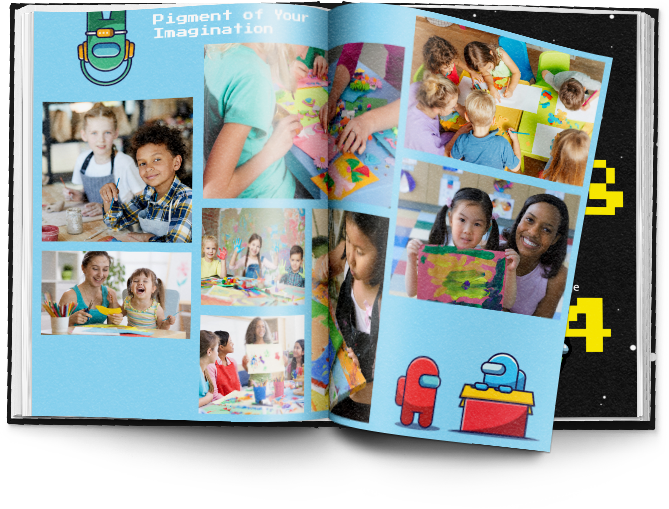
If you'd like more help selecting a yearbook theme and design trend for your community this year, check out these five questions to ask your yearbook team.

Treering yearbook support: how and when you want it
When you need help, you want it the way you want it. Do you want to pick up the phone and talk with a human? No problem. Do you want to watch a video that shows how something works? We've got 100s. Do you want to read step-by-step instructions? We've got a library. Knowing everyone is unique, Treering's yearbook support options ensure you are the Yearbook Hero for your campus.
"I did not know a yearbook company was something someone could love."
Donna Blach, Ronald Reagan Elementary
Email and Phone Support
Your support team is called the Community Advocate Team (CAT) because they champion yearbook advisers.
With Treering, the days of waiting for one person to call you back, schedule a meeting, or come back from vacation are over. We don't have just one person available to you, we have a full US-based team of yearbook support experts at your disposal. We have your back from autoflowing portraits to obtaining an editable flyer for a cover contest.
Large School Support
When you make a yearbook for a larger school, sometimes you need a little more. You know, that person who is not only friendly, but understands your yearbook so well they find the solution that suits you. Customer Success Managers ensure their entire team knows your school, so not only can you reach out to them for help, but anyone they work with. Anytime.
“Liz was (again) extremely helpful! She answered all my questions with confidence and ease, and because she is so very approachable, I knew I could just reach out and get the info I needed to move on quickly! Liz was always available and was flexible in meeting my school community’s needs along the whole way."
Tammy Mougis, Northwood Elementary
“JASON SPRINGER!!!!!!!!!!!! The absolute best human on the planet!!!!! Seriously, I can not even begin to express how amazing he is! He was always available, regardless of what time it was and always willing to lend a hand! He guided me through so many steps and layouts and created awesome tutorials and offered solutions and just literally made my life so much easier during the process. Treering is a very user-friendly program however, Jason made my life so so much easier! Thank you for another beautiful book!!!”
Elina Pavic from Mattlin Middle School
Step-by-Step Assistance and Videos
Are you are DIY person? Then the Help Center, with its videos and step-by-step instructions, is there 24/7 so you can manage your project on your schedule.
Monthly Yearbook Support Resources
Resources to support you and your team go beyond answers. You'll get Treering's free curriculum and access to training to complete your toolkit as you see fit.
Newsletters
Once a month, Treering Yearbook Creators receive newsletters. You'll receive sales, design, and technical resources to both keep you on track and make you smile.

Yearbook Club
Live Yearbook Club webinars offer additional yearbook support and an opportunity to connect with elementary, middle, and high school coordinators. Topics include:
- Yearbook quick start
- Going print ready
- Design ideas
- Social media tips
From start to finish, Treering will be by your side.

4 ways to shake up your end-of-year yearbook party
As the end of the school year approaches and yearbooks get delivered, it’s the perfect time to throw a yearbook party. What better way to remember the year than to go through your yearbook and host a signing party?! We know when it comes to throwing a school party that everyone just thinks of one thing – pizza – but yours can be so much more. A class party should be about celebrating and making memories, not just eating food (to be honest food is always the first thing that pops into my mind, but I digress).
As this year has been so different, we wanted to make sure you had some ideas on how to celebrate the memories made in the yearbook, whether you were in school or virtual, and for students who bought a yearbook or not. If this year taught us anything, it's that you have to find the time to be present and live for the moment - celebrate with one another. Social distancing can, in fact, be social!
Here are a few in-school party ideas:
Throw a Blast From the Past Party
As a parent volunteer or teacher, there are a lot of ways you can take your students back in time. So when you’re ready to throw your yearbook party, set the scene by printing out some fun pictures you’ve taken throughout the year and hang them around the room. Or, if you’ve kept any previous party decor from other celebrations like Halloween or pie day, you can create themes throughout the room to reflect the year that has passed. Decorating the room with old photos and decorations is a great way to remind your students of all the good times and bonus, you get to recycle old projects, while keeping party expenses down!
To liven up the party and get the students excited, have them bring in their favorite projects of the year to reminisce on all the great things they’ve learned. This party will encompass all the memories from the yearbook, the decorations, and even their learning experiences. While all the fun is happening, students can sign yearbooks and share something nice about each project they brought in.
If you can, really blast to the past by bringing each student in fake feather quill pens for them to sign each other’s yearbook.
Host Pop-Con with Popcorn
A fun way to throw a party in the classroom is to get students involved in a craft and whether they bought a yearbook or not, throwing a yearbook party is about celebrating memories and making more. A similar craft to a yearbook that elementary students can make is a comic strip! Give each student some time to go through the yearbook and then celebrate by letting them create their own mini-book or comic strip of their favorite school-year memory. Letting them create this craft on their own will help them develop mentally, socially, and emotionally.
And everyone loves a good play on words, so add some popcorn for everyone to enjoy while they make their Pop-Con comics! Even if you still have to be socially distant, separate the popcorn in individual cups or baggies. After everyone has enjoyed their popcorn and drawn their comic, have them go around the party and sign their yearbooks (or comic strips) as they chat about all the good times. This party gives all the students an additional souvenir of the year and more fond memories of their classmates.
Make a Magnet Memory
If you work in the classroom, you know students love to bring something home to show off. This yearbook party, which involves making a mini book magnet, creates another memento for students to bring home celebrating their year – just like the yearbook. You’ll need some more supplies for this craft including a hot glue gun and magnets. Similar to the last craft, start your party off by letting the students explore the yearbook to find what memory they want to recreate. Provide 3x4” cardstock paper for students to fold and draw pictures of recess, lunch time, masks or anything else that sparks excitement.
After the students get their time to cut out and color a little mini book, let them sign their mini yearbook and send them around with their own pens to sign everyone else's real-sized yearbook. Make sure everyone turns in their drawing, so you can glue the magnets on and return their crafts before summer break.
This party ensures all students have a memento for the year!
For those celebrating the end of the year virtually, here are a few remote party ideas:
Throw a Yearbook Reveal Party
When you’re celebrating school milestones virtually, it can be tricky. But a fun way to experience the yearbook is to reveal it! Using Zoom or another platform, take your students through each page of the yearbook, almost as if you are reading a story aloud. Another way to liven a yearbook reveal party is to have a surprise guest come in to share a few pages. You could use someone like the principal or another teacher as long as your school’s guidelines permit.
Give the students time to see each page, comment on its contents and share excitement about the inclusivity of themselves and their classmates, which will likely be the pages they love most. If you throw any kind of contest for your students’ drawing to be on, give them a shoutout. Some yearbook companies even have features that allow you to sign yearbooks digitally, which is definitely a perk with schools having to do many things virtually this past year.
This year was a challenging one that resulted in many unique moments for students. Because of this, the yearbook will be looked at for many years to come. Take time to celebrate the fact you and your students have made it! Congrats Students, teachers, and parents... you did it!

Still not started? Get your yearbook done in a snap
Every school year feels like a whirlwind, so if you’re getting a late start on your yearbook creation this year, don’t sweat! This is the year where miracles do happen, and we find out we are all a lot stronger than we give ourselves credit for. You've got this! And if you don't want to do it as a solo act, join one of our live webinars, including our popular Yearbook Quick Start session.

Step 1: Update Your Student Roster
The first step toward a quick yearbook build is to update your community and student roster. This seems tedious but will save you hours if you do this first. You will easily be able to tag to ensure inclusivity or to create an index. You will also be set up to start marketing and selling your book. Last but not least, this will make sure your books are sorted properly upon arrival saving you tons of time once they arrive, or shipped to the correct address if you're shipping yearbooks to homes.
Step 2: Communicate with Your School Community
With an updated student roster, you can now effectively communicate with your community and launch marketing campaigns that support yearbook building and orders. Examples of communication that will help you build a better book include emails asking for photos, how to purchase books, and special features like creating custom pages and showing your students/parents how to create e-signatures.
Step 3: Collaborate with Your School Community
The best yearbooks include input from your community, even in a non-pandemic school year one person cannot be everywhere all the time. Following strong communication, you are set up to effectively collaborate on the yearbook too. Crowdsource photos from school staff, parents, coaches, and more. When possible, assign class pages to others, not only will this lead to spreads that are most reflective of school experiences, but oh yea, you'll get to unload some of your workload. Win-win!
Step 4: Upload Your Students' Portraits
Whether your school was able to take professional portraits or you are sourcing portraits from your community, upload these to your yearbook next. Most yearbook software will have an easy solution to help you with either path.
Step 5: Select Your Yearbook Theme & Style
Now that you’ve connected with your community and begun sourcing ideas and visuals for your yearbook, you’re ready to select and set up your book themes and styles. In addition to designing your own themes, there is a library of professionally designed themes to pick from when you’re in a pinch.
Step 6: Build Your Book
It’s time! Let’s build … take advantage of technology here! With features like auto-page layouts that magically lay your photos out beautifully on a spread or pre-designed pages that cover the best of..., and year in review, you are set to create a meaningful yearbook for your students and community to cherish for years to come. Still looking for more information? We've curated a giant list of ideas for you to steal for your community.
Step 7: Set Your Yearbook to Print Ready!
That's it, you're done. The final step is to set your book to “print-ready,” which ships it to the printers and if you're using Treering, you'll have your books in hand in 3 weeks or less. If for any reason you want a little more time, it’s easy to adjust print-ready deadlines too.
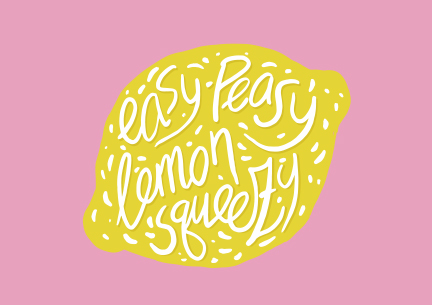
Clearly, this is still a lot of work, but we've included every trick in the book to make sure you are on your way fast! This is the yearbook that will be looked at for years and years to come. The year like no other.
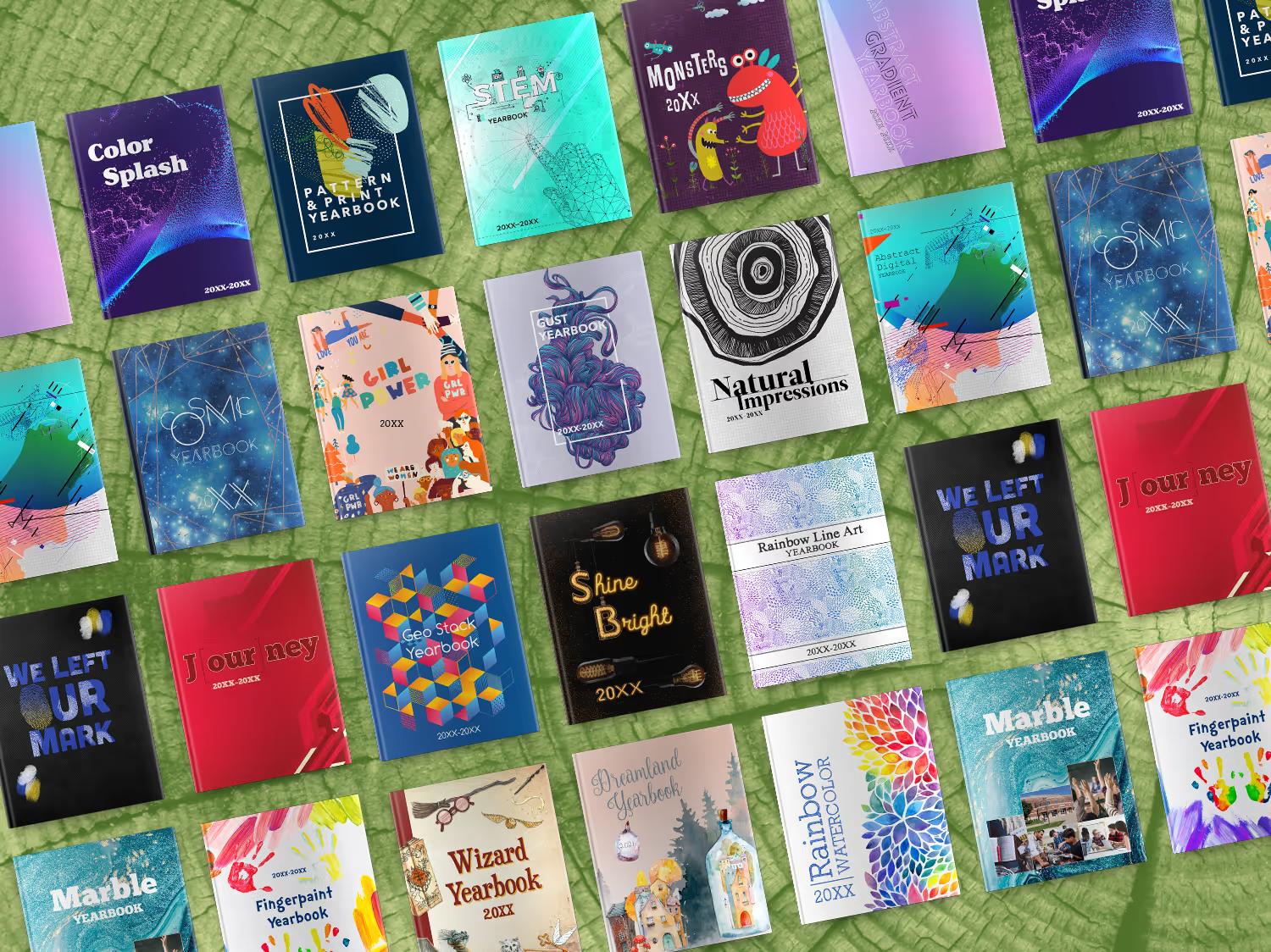
5 tips to help you find your yearbook theme
Why Should You Run a Yearbook Cover Contest?
Academic goals are of course the primary focus at school, but consider asking the students to layout SMART (specific, measurable, action, reasonable, time) goals at the beginning of the year. Come the end of the year they can go through a self evaluation that will lend itself nicely to the story of your yearbook. Goals could be long or short term. I remember having goals to read a certain number of books throughout the school year as well as trying to make it through a day without doodling on my hands/arms/legs.What’s popular with your students this year?
From movies to music, snacks to snapchat, pop-culture can be a great way to get some inspiration for your theme. The benefit to using a theme centered on pop culture is it adds an extra layer of nostalgia beyond your photo and story memories. The down-side, well as a child of the ‘80’s I can honestly say the photo of me with 5 foot tall bangs and fanny pack was embarrassing enough, not sure I need to be reminded of the countless hours lost to New Kids and Nintendo.How are your student’s different from others?
This might seem like a difficult question, but ask your students. They will typically know what makes their school “better” than the rival neighboring school. Growing up most of my classmates lived on a lake, because of this we were all about the water sports. We knew how to waterski off the dock, build pyramids, and wakeboard. We would have loved to see this represented in the theme of our yearbook, as it was unique to our school. You don’t need to limit yourself by the schools colors, the yearbook should tell the story of one moment in time and school colors are not unique to one year.What issues are student’s passionate about?
Pop culture changes year-over-year and with that children become passionate about different issues facing the world today. Similar to Michael Jackson and Free Willy raising awareness on preserving and protecting the ocean and its inhabitants, today children are talking about climate change and fact checking. Lucky for them they will never understand the frustrations of the card catalog now that Alexa can answer just about all their questions. Consider what issues students are talking about in class and how they are learning to make a positive impact in our future.Who are your student’s role models?
You might be surprised; kids today are #woke. Gone are the days where Micheal Jordan and Madonna served as the role models of youth. Kids today are looking up to people like Elon Musk and Ruth Bader Ginsberg. They are not just aware of what’s happening in the world, but they are choosing their role models wisely. Now that you’ve asked yourself a few questions, I thought I’d share some brand new themes that might get you on the road to something truly unique for your yearbook. Below are 5 fresh themes for you to consider for your tribe.Fingerpaint
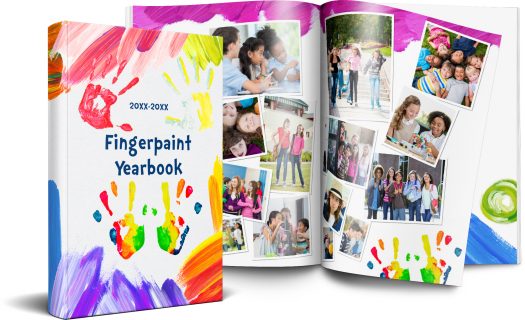 This theme captures the spirit of imagination, similar to Harold and his purple crayon, each student has the ability to draw whatever they might need, leaving their unique handprints behind as a reminder of what they have achieved.
This theme captures the spirit of imagination, similar to Harold and his purple crayon, each student has the ability to draw whatever they might need, leaving their unique handprints behind as a reminder of what they have achieved.
STEM
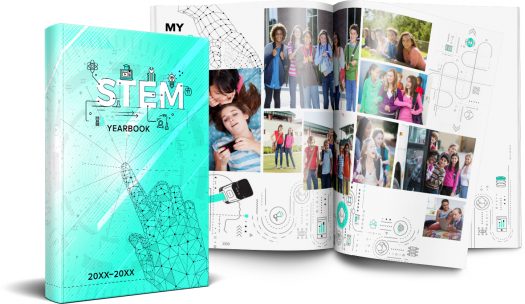 Early learning experiences in Science, Technology, Engineering and Mathematics (STEM) are critical in preparing elementary school students for STEM learning in middle and high school, as well as for future careers in STEM-related fields. This theme talks to more than just the tech culture our children live in, but how schools are more focused now than ever in bringing STEM to the forefront of learning.
Early learning experiences in Science, Technology, Engineering and Mathematics (STEM) are critical in preparing elementary school students for STEM learning in middle and high school, as well as for future careers in STEM-related fields. This theme talks to more than just the tech culture our children live in, but how schools are more focused now than ever in bringing STEM to the forefront of learning.
J[our]ney
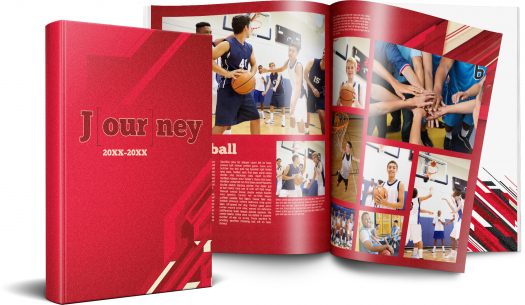 With multiple different color options, this is a classic, bold, choice for a yearbook tribe wanting to add some graphic texture to their book. It’s sentimental in begging the question, “What does the school care about for the year?” There are many ways to play with this theme. Consider some wordplay:
With multiple different color options, this is a classic, bold, choice for a yearbook tribe wanting to add some graphic texture to their book. It’s sentimental in begging the question, “What does the school care about for the year?” There are many ways to play with this theme. Consider some wordplay:
- Y[our] goals
- Enc[our]agement
- N[our]ishment
- Study h[our]
- Y[our] story
Color Splash
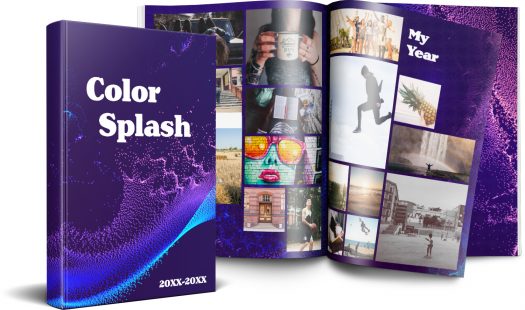 It’s subtle yet elegant in the movement of the dots first flowing together then breaking off to find their own individual path, but not before first making a splash. This yearbook theme would be best for books that are text heavy, given the words will pop on the purple background, and there isn’t a lot of distracting artwork.
It’s subtle yet elegant in the movement of the dots first flowing together then breaking off to find their own individual path, but not before first making a splash. This yearbook theme would be best for books that are text heavy, given the words will pop on the purple background, and there isn’t a lot of distracting artwork.
Cosmic
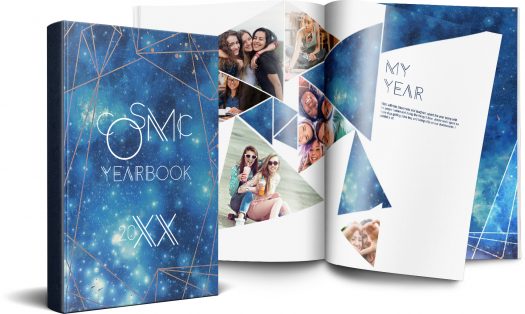 The applications of this theme reach to infinity and beyond. From the single star that shines bright to the entire constellation of stars, our students are pushing the boundaries of learning to their outer limits.
Each yearbook tells the story of just one year, whether your theme is how power corrupts, as in J.R.R. Tolkien’s Lord of the Rings, or love and loss as in Nicholas Sparks’ The Notebook, (I genuinely hope those aren’t actually your themes) these ideas should help you get started. If you are looking for more inspiration, check out this handy theme generator, it might get you and your yearbook tribe a bit further on your journey.
The applications of this theme reach to infinity and beyond. From the single star that shines bright to the entire constellation of stars, our students are pushing the boundaries of learning to their outer limits.
Each yearbook tells the story of just one year, whether your theme is how power corrupts, as in J.R.R. Tolkien’s Lord of the Rings, or love and loss as in Nicholas Sparks’ The Notebook, (I genuinely hope those aren’t actually your themes) these ideas should help you get started. If you are looking for more inspiration, check out this handy theme generator, it might get you and your yearbook tribe a bit further on your journey. 
Selling yearbook ads? Read this first.
If you’re considering whether selling yearbook ads is right for your staff, you’re probably looking to take your team to the next level. Of course, it might also mean you’re hoping to satisfy a financial obligation to your yearbook publisher.
Yearbook ad sales can represent a fantastic learning opportunity. This process can empower your students with real-world skills, from pitching to potential clients to designing captivating advertisements. And the proceeds that come from selling ads to parents and local businesses can help offset or even eliminate the cost of many wish-list items.
However, if ad sales are necessary to offset yearbook debt instead of a way to benefit your program, Treering can help.
Define Your Goal
Before you think about ad sales, ask yourself: what’s our objective? Generally speaking, schools sell yearbook ads for one of four reasons:
- To teach business skills (sales, advertising, negotiation, and more)
- To purchase new equipment
- To help students pursue related learning opportunities
- To pay back existing yearbook debt
If your aim aligns with the first three, congratulations! Purchasing hardware and software that, in your staff's well-trained hands, will enhance your program for years to come is a fantastic achievement. And being able to do so self-sufficiently is even better! If you find yourself here due to the last reason, however, read on.
Cultivate Favorable Terms
There are many reasons your yearbook organization could be in debt. Perhaps you bought too many books last year (tip: not every company requires a minimum order quantity). Maybe unexpected charges surfaced on your final invoice or your per-book price seems high. Regardless, if ad revenue is solely meant to cover existing debt, it's a signal to reassess terms with your publisher.
The solution? Negotiate more advantageous terms. Open communication with your publisher can often lead to mutually beneficial solutions. Many publishers are willing to collaborate to foster goodwill and ensure continued revenue.
If renegotiation proves challenging, consider evaluating other publishers. Look for a partner that offers flexible terms, never requires contracts or minimum purchase requirements, provides inclusive per-book pricing without hidden fees, and offers school-friendly ways to raise funds.
Selling Yearbook Ads: the Potential of Your Program
Your yearbook has the potential to not only capture memories but also generate revenue for your program. If you find it becoming a financial burden instead, it's a cue to reassess your strategy. Selling yearbook ads should be a positive venture, enhancing your students' skills and contributing to the success of your yearbook program. As you embark on this journey, keep the focus on empowerment, learning, and the enduring impact your yearbook can have on your school community.

